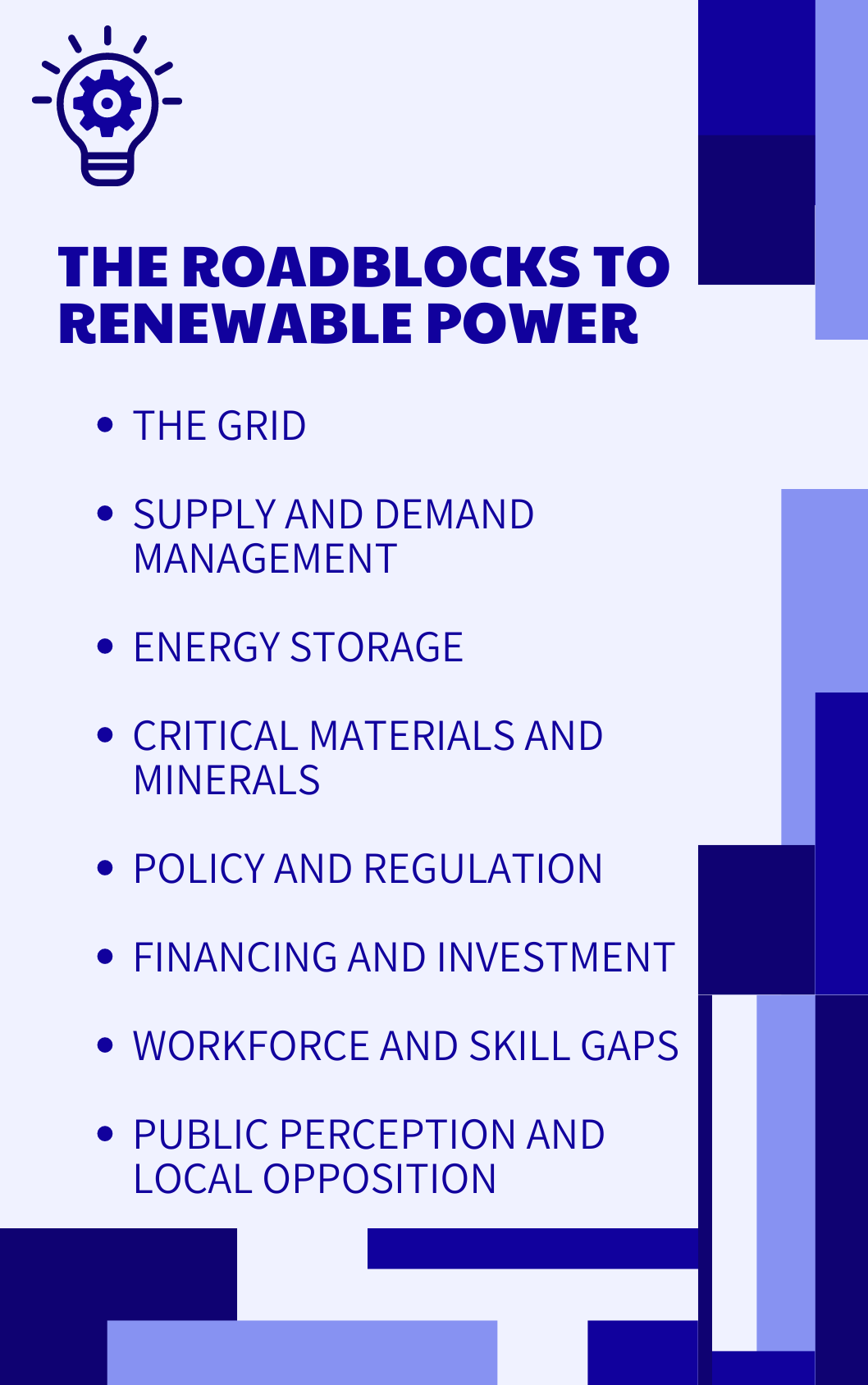The Roadblocks to Renewable Power: 8 Key Challenges
As the world pushes towards a future powered by renewable energy, significant bottlenecks stand in the way of rapid progress. From infrastructure limitations to social challenges, these obstacles highlight the complexities of transitioning to a sustainable energy system. Understanding these bottlenecks is essential to develop solutions that will enable green energy to meet the growing global demand. Below, we explore eight critical bottlenecks affecting the shift to renewable energy.
1. The Grid
The grid is the backbone of energy distribution, but it’s aging and often ill-equipped to handle the influx of renewable energy. Upgrading the infrastructure to accommodate more intermittent sources like wind and solar is a slow and costly process. Additionally, decentralized energy production (like rooftop solar) requires smarter, more adaptable grids, something most countries are not yet prepared for. Without a modernized grid, renewable energy's potential remains constrained.
2. Supply and Demand Management
Renewable energy sources don’t always produce power when demand is highest. Managing this mismatch between supply and demand is a critical challenge. Solutions like smart grids and demand-side management are still underdeveloped, while the need to balance production and consumption in real-time becomes more pressing as renewable energy’s share of the grid grows. The current systems often fail to accommodate these fluctuations, risking grid instability.
3. Energy Storage
Effective energy storage is the key to overcoming the intermittent nature of renewables. However, large-scale storage solutions are limited, expensive, and often have capacity issues. Lithium-ion batteries, while common, come with supply chain concerns, and alternative technologies like pumped hydro and advanced battery systems are not yet widespread. Without efficient, scalable storage, much of the renewable energy produced cannot be fully utilized.
4. Critical Materials and Minerals
The transition to green energy relies heavily on critical materials such as lithium, cobalt, and rare earth elements, which are essential for battery production and renewable technology components. These materials are not only scarce but also come with geopolitical risks and environmental concerns related to mining. Securing a stable supply chain for these materials, while finding more sustainable alternatives, is one of the most pressing challenges for the energy transition.
5. Policy and Regulation
Regulatory frameworks often lag behind technological advancements. Outdated policies and slow regulatory approvals can stifle renewable energy projects and make integrating new technologies difficult. Inconsistent government support and unclear policy directions can further slow progress, leaving the renewable energy sector waiting for more conducive environments to thrive.
6. Financing and Investment
While renewable energy projects promise long-term savings, their high initial capital requirements pose a challenge for investors. Securing financing for large-scale renewable projects can be difficult, especially without stable government incentives or clear market signals. The uncertainty around returns on investment, combined with policy fluctuations, means private sector involvement is often hesitant.
7. Workforce and Skill Gaps
The renewable energy sector requires a skilled workforce to install, maintain, and innovate its technologies. However, there is a global shortage of workers with the necessary skills. Retraining workers from traditional energy sectors, such as fossil fuels, and attracting new talent to renewable industries is essential to ensure that projects can move forward at the pace needed to meet global climate goals.
8. Public Perception and Local Opposition
Despite the global push towards renewables, many projects face local opposition due to concerns about land use, aesthetics, or potential disruptions. Wind farms, solar installations, and transmission lines often encounter resistance from communities that feel these projects will negatively impact their local environment or property values. Additionally, misinformation about the reliability and cost of renewable energy can fuel public opposition, slowing project approval and construction timelines.
The transition to green energy is not without its hurdles. While technological advancements continue to accelerate, a host of technical, regulatory, and social bottlenecks must be addressed for renewable energy to realize its full potential. From modernizing the grid and securing critical materials to reshaping public perception, overcoming these challenges will require coordinated efforts across industries, governments, and communities. The future of green energy is bright, but the path forward will demand innovation, investment, and global collaboration.

